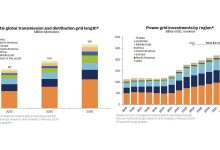Two New Ultra-Clean Marine Fuels Made from Non-recyclable Plastic Waste
Clean Planet Energy (CPE) has released details of two new ultra-clean fuels manufactured to replace fossil fuels in the Marine industry, for use in any ship or vessel. The products branded under the banner of “Clean Planet Oceans” can provide CO2e reductions of over 75 percent, and significantly reduce harmful air-pollutants by up to 1,500x. Both fuels are produced using non-recyclable waste plastics as the feedstock, therefore removing waste which would otherwise go to incineration, landfill or into our oceans.
Following Clean Planet’s recent announcement of ultra-clean aviation fuel, Clean Planet Oceans includes an ultra-clean Marine Residual Fuels (also known as bunker fuel or fuel oil) meeting international ISO 8712 2017 standards, and also a premium Marine Distillate Fuel which matches the highest EN15940 Diesel specification.
In addition to the 75 percent CO2e reduction, a significant benefit of these new fuels is the notable decrease in NOx (Nitrogen Dioxide) and SOx (Sulphur Oxide) emissions. NOx and SOx are some of the most common air-pollutants from the burning of fossil fuels and are estimated to be globally responsible for 9,000 daily deaths (source: IHME). Clean Planet’s fuels can reduce sulphur emissions by 1,500x when compared to the latest, stringent IMO regulations.
“Air-pollutants such as sulphur are measured by ppm (parts per million). Under the IMO 2020 (International Maritime Organisation) regulations implemented last year, a ship with a scrubber installed onboard is allowed to emit 35,000ppm of sulphur into the sea when burning fossil marine fuel oil, whilst a ship without a scrubber is allowed to emit 5,000ppm of sulphur into the air”, said Clean Planet Energy’s CTO, Dr. Andrew Odjo. “In contrast, Clean Planet Energy’s Marine Residual Fuels has a sulphur content of just 35ppm, and Clean Planet Energy’s Marine Distillate has a sulphur content of just 3ppm. This means that ships using Clean Planet Ocean’s marine distillate fuel can reduce sulphur pollution by over 1500x compared to ships using fossil fuel without a scrubber, and by more than 10,000x compared to ships with a scrubber”.
The UK based renewable energy company will produce these ultra-clean circular fuels inside their ecoPlants. A Clean Planet ecoPlant® can accept and convert non-recyclable waste-plastics, that would otherwise be heading to incineration, landfill, or worse – into the oceans. According to data sourced by parties including the US EPA and the World Economic Forum, this year 203 million tonnes of plastic will become non-recyclable waste, meaning that the Clean Planet process not only reduces CO2e emissions and air pollutants, but also tackles the plastic crisis too.
“There is currently no legitimate and scaled alternative compared to using carbon-based fuels in the Marine and Aviation sector. Whereas cars are moving to electric, the lifespan of large vessels means we’ll be stuck using fossil fuel engines for many years to come. By using non-recyclable waste plastics as a feedstock for fuels in these industries, we can reduce the daily CO2e emissions by 75 percent, keep fossil-oil in the ground, and win valuable time in the world’s battle to hit net-zero carbon emissions”, added Dr. Odjo.
Currently Clean Planet have two ecoPlants in construction phase, with another 4 in development and have a mission to build ecoPlants to process over 1 million tonnes of waste plastics per annum. A standard Clean Planet ecoPlant can process 20,000 metric tonnes of waste plastics every year.
Key findings
- Extraction: As CPE’s process feedstock is derived from waste plastics, extraction phase GHG emissions are calculated to be zero.
- Production: The application of CPE’s proprietary pyrolysis and oil-upgrading technology enables an estimated 47% reduction in production phase GHG emission, for all liquid hydrocarbon products, compared to that of a conventional fossil fuel process. This can be attributed to the fact that CPE’s ecoPlants are designed to be self-powered, utilising a combination of pyrolysis gas and solar-PV technology to meet process heat and power demand.
- Usage: Whilst no GHG emission savings were calculated forecast through the usage phase (combustion) of CPE’s liquid hydrocarbon fuel products, compared to fossil fuel-derived equivalents, a significant reduction in NOx, CO and SOx emissions are anticipated from the use of CPE’s fuels.
- Well-to-Tank: As CPE’s liquid hydrocarbon fuels are produced from non-recyclable waste plastics, displacing fossil fuel derived fuel production as well as avoiding plastics disposal via incineration, maximum GHG emissions savings of up to 330% (416 kgCO2e/barrel) are anticipated compared to conventional fossil fuel derived processes and products.
- Well-to-Wheel: As CPE’s liquid hydrocarbon fuels are produced from non-recyclable waste plastics, displacing fossil fuel derived fuel production as well as avoiding plastics disposal via incineration, maximum life cycle GHG emissions savings of up to 78% are anticipated compared to conventional fossil fuel derived processes and products.
Key points
- Clean Planet’s liquid fuels provide at least a 78% reduction in CO2e emissions compared to traditional fossil fuels, considering 100% incineration avoidance.
- Clean Planet’s liquid fuels provide at least a 48% reduction in CO2e emissions compared to traditional fossil fuels, considering 50% incineration avoidance and 50% landfill avoidance.
- For every barrel of Clean Planet’s liquid fuel used in replacement of traditional fossil fuels, 416 kg of CO2e emissions are stopped from entering the atmosphere, considering 100% incineration avoidance.
- For every barrel of Clean Planet’s liquid fuel used in replacement of traditional fossil fuels, 257 kg of CO2e emissions are stopped from entering the atmosphere, considering 50% incineration and 50%landfill avoidance.
- For every barrel of Clean Planet’s liquid fuel used in replacement of traditional fossil fuels, 98 kg of CO2e emissions are stopped from entering the atmosphere, considering 100% landfill avoidance.
- CPE’s ecoPlants are designed to be self-powered, utilising the syngas produced to heat and power the production plant. In addition, solar PV technology is designed to be used to meet any excess power demand.







